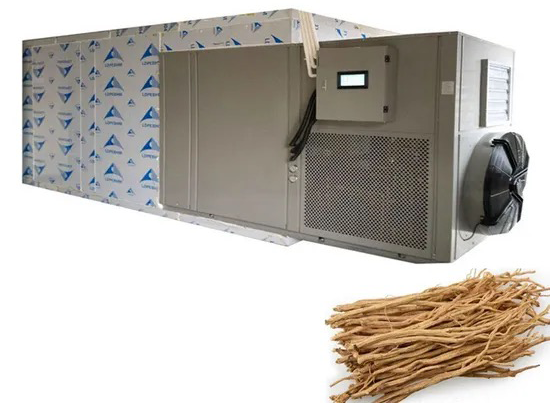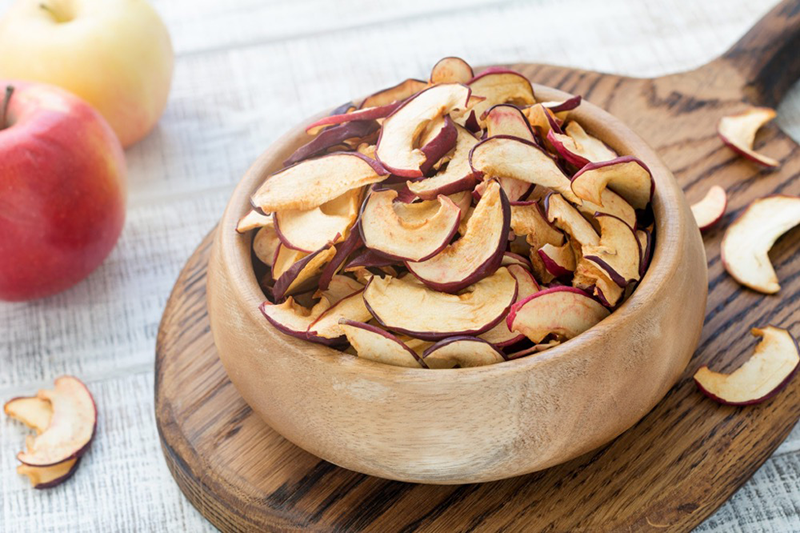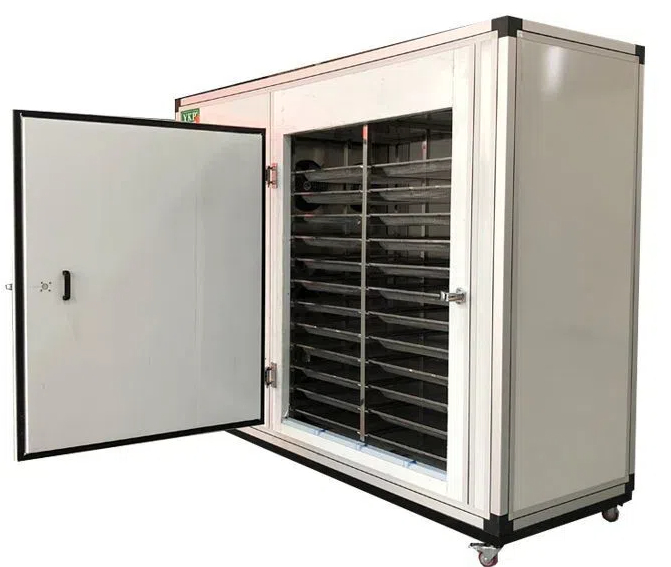
Content Menu
● Understanding Food Dehydrators
>> How Does a Food Dehydrator Work?
● Benefits of Using a Food Dehydrator
● Types of Foods Suitable for Dehydration
● Common Mistakes When Using a Food Dehydrator
● Troubleshooting Your Food Dehydrator
>> 1. Uneven Drying
>> 2. Long Drying Times
>> 3. Food is Not Drying at All
>> 4. Over-Drying
>> 5. Odors Transferring Between Foods
● Tips for Successful Dehydration
● Creative Uses for Dried Foods
● Storage Tips After Dehydration
● The Environmental Impact of Dehydrating Foods
● Final Thoughts on Food Dehydration
● Conclusion
● FAQ
>> 1. What types of foods can I dehydrate?
>> 2. How long does it take to dehydrate food?
>> 3. Can I use my oven instead of a dehydrator?
>> 4. Is it worth buying a food dehydrator?
>> 5. How do I clean my food dehydrator?
● Citations:
Food dehydrators are essential tools in the culinary world, particularly for those who wish to preserve food while enhancing its flavors. As a manufacturer of food drying machines, we aim to provide insights into how these devices work, their benefits, and troubleshooting tips that can help you maximize their efficiency.

Understanding Food Dehydrators
A food dehydrator is a device designed to remove moisture from food, which helps in preserving it. The process of dehydration involves lowering the water content in foods, thus inhibiting the growth of bacteria and mold. This method is particularly effective for fruits, vegetables, and meats.
How Does a Food Dehydrator Work?
Food dehydrators utilize heated air circulation to evaporate moisture from food items. The key components include:
- Heating Element: Generates heat to warm the air inside the dehydrator.
- Fan: Circulates hot air evenly around the food trays.
- Air Vents: Allow moisture to escape, enhancing the drying process.
- Trays: Hold the food and are designed to maximize airflow around each piece.
The typical temperature range for effective dehydration is between 40°C (104°F) and 75°C (167°F). This range ensures that moisture is removed without significantly degrading the nutritional value of the food.
Benefits of Using a Food Dehydrator
Using a food dehydrator offers numerous advantages:
- Extended Shelf Life: Dehydrated foods can last for months or even years without refrigeration.
- Nutrient Retention: Dehydrating at lower temperatures preserves vitamins and minerals better than cooking methods like boiling or frying.
- Flavor Enhancement: The concentration of flavors in dehydrated foods often results in a more intense taste.
- Cost Efficiency: Buying fruits and vegetables in bulk when they are in season and dehydrating them can save money.
- Healthy Snacks: Homemade dehydrated snacks are free from preservatives and additives found in many store-bought options.
Types of Foods Suitable for Dehydration
Different foods require specific dehydration techniques:
- Fruits: Apples, bananas, peaches, and mangoes can be dried at higher temperatures (around 57°C or 135°F).
- Vegetables: Carrots, tomatoes, and bell peppers should be dried at lower temperatures (around 50°C or 122°F).
- Herbs: Delicate herbs like basil and thyme require even lower temperatures (around 35°C or 95°F).
- Meats: When making jerky, meat should be cooked first to an internal temperature of 74°C (165°F) before dehydration.
Common Mistakes When Using a Food Dehydrator
To ensure successful dehydration, avoid these common mistakes:
- Not Prepping Food Properly: Failing to wash or cut food into uniform pieces can result in uneven drying. Always wash fruits and vegetables thoroughly and slice them into similar sizes.
- Ignoring Temperature Settings: Each type of food has an optimal temperature for dehydration. Using incorrect settings can lead to spoilage or inadequate drying.
- Overloading Trays: Overcrowding trays restricts airflow, leading to uneven drying. Always leave space between pieces for optimal air circulation.

Troubleshooting Your Food Dehydrator
While food dehydrators are generally easy to use, issues can arise. Here are common problems and their solutions:
1. Uneven Drying
Cause: Improper airflow due to overcrowding or incorrect placement of trays.
Solution: Ensure that food pieces are not touching each other and rearrange trays if necessary. Rotate trays halfway through the drying process for even results.
2. Long Drying Times
Cause: Incorrect temperature settings or high moisture content in food.
Solution: Check that your dehydrator is set to the correct temperature for the type of food you are drying. Pre-treat fruits with lemon juice or blanch vegetables before dehydration to reduce drying time.
3. Food is Not Drying at All
Cause: A malfunctioning heating element or fan.
Solution: Inspect the unit for any visible damage or blockages. If the issue persists, consult the manufacturer's manual for troubleshooting steps or contact customer support.
4. Over-Drying
Cause: Leaving food in the dehydrator too long can lead to loss of flavor and texture.
Solution: Regularly check on your food as it dehydrates. Use a timer to remind yourself when it might be done based on recommended times for specific foods.
5. Odors Transferring Between Foods
Cause: Strong-smelling foods may impart their scent onto milder foods when dried together.
Solution: Always dry strong-smelling foods separately from delicate ones. Consider using dedicated trays for pungent items like garlic or onions.
Tips for Successful Dehydration
To achieve optimal results with your food dehydrator:
- Cut food into uniform sizes for consistent drying.
- Use parchment paper on trays for sticky foods like fruit leathers.
- Monitor progress regularly; check if foods are adequately dried by placing them in a glass—if it fogs up, they need more time.
- Store dried foods properly in airtight containers away from light and humidity to maintain quality.
Creative Uses for Dried Foods
Dried foods can be used in various culinary applications:
- Snacks: Enjoy dried fruits as healthy snacks on their own or mix them with nuts for trail mix.
- Cooking Ingredients: Rehydrate dried vegetables and use them in soups, stews, and casseroles.
- Baking Additions: Incorporate dried fruits into muffins, breads, and granola bars for added flavor and texture.
- Garnishes: Use dried herbs as garnishes on dishes or rehydrate them for sauces and dressings.
Storage Tips After Dehydration
Once your foods have been successfully dried using your machine:
- Store them in vacuum-sealed bags if possible; this method removes excess air which helps prolong shelf life even further.
- Label containers with dates so you know when items were prepared; this helps keep track of freshness over time.
- Consider using desiccants within storage containers—these absorb any remaining moisture present which could compromise quality later on down the line.
The Environmental Impact of Dehydrating Foods
Using a food dehydrator not only benefits individual health but also contributes positively towards environmental sustainability:
- Reduces Food Waste: By preserving surplus produce through dehydration instead of discarding it due spoilage contributes towards minimizing overall waste generated within households.
- Energy Efficiency: Many modern models utilize less energy compared traditional cooking methods since they operate at lower temperatures over extended periods rather than high heat briefly—making them eco-friendlier options overall!
Final Thoughts on Food Dehydration
In conclusion, understanding how best utilize your appliance alongside knowing potential pitfalls ensures successful outcomes every time! Whether you're looking create healthy snacks or preserve seasonal bounty from gardens – investing time learning about proper techniques pays off immensely down road!
With these insights into both usage practices along with troubleshooting guidance provided throughout this article—you're now equipped tackle any challenges head-on while enjoying delicious homemade treats all year round!
Conclusion
Food dehydrators are invaluable appliances that not only extend the shelf life of ingredients but also enhance their flavors and nutritional value. By understanding how they work and how to troubleshoot common issues, users can make the most out of their investment in a food dehydrator. With proper techniques and care, you can enjoy delicious home-dried snacks while saving money and reducing waste.

FAQ
1. What types of foods can I dehydrate?
You can dehydrate fruits, vegetables, herbs, and meats. Each type requires specific temperatures for optimal results.
2. How long does it take to dehydrate food?
Dehydration times vary based on the type of food and thickness of slices but typically range from 4 to 12 hours.
3. Can I use my oven instead of a dehydrator?
While some ovens have a dehydration setting, they do not maintain low temperatures as effectively as dedicated dehydrators.
4. Is it worth buying a food dehydrator?
Yes! A dehydrator allows you to preserve seasonal produce, create healthy snacks, and save money in the long run.
5. How do I clean my food dehydrator?
Most parts are removable and dishwasher safe; however, refer to your user manual for specific cleaning instructions to ensure longevity.
Citations:
[1] https://en.wikipedia.org/wiki/Food_dehydrator
[2] https://www.mitchellcooper.co.uk/what-is-a-dehydrator-commercial-buying-guide
[3] https://www.goodhousekeeping.com/appliances/a31904157/what-is-a-dehydrator/
[4] https://www.foodandwine.com/lifestyle/kitchen/best-food-dehydrators
[5] https://www.callmelore.com/fool-proof-healthy-dehydrator-recipes/
[6] https://create.vista.com/photos/dehydrator/
[7] https://www.youtube.com/watch?v=mtDzdYoyeR8
[8] https://www.youtube.com/watch?v=m1K2mbk8WZo
[9] https://cosori.com/blogs/blog/how-does-a-food-dehydrator-work
[10] https://www.istockphoto.com/photos/food-dehydrator











